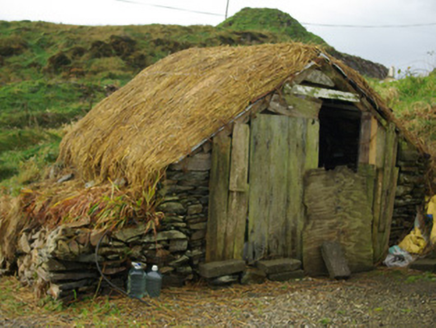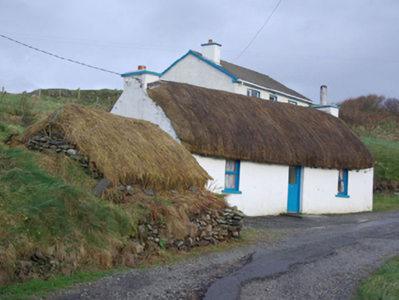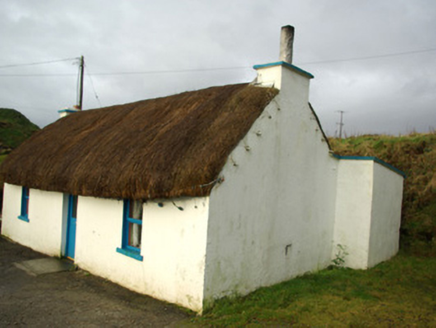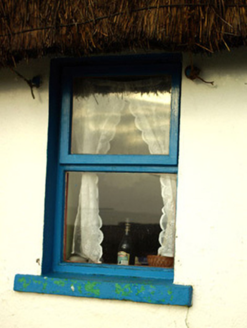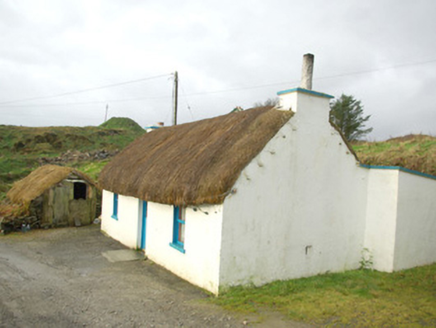Survey Data
Reg No
40909613
Rating
Regional
Categories of Special Interest
Architectural, Technical
Original Use
House
In Use As
House
Date
1820 - 1860
Coordinates
160784, 375803
Date Recorded
04/12/2007
Date Updated
--/--/--
Description
Detached three-bay single-storey vernacular house, built c. 1840, having single-storey extension to the rear (north). Still occupied. Pitched/domed thatched roof (recently re-thatched) having ropes over secured on pegs at eaves level. Roughcast rendered chimneystacks to either gable end. Square-headed window openings with stone sills and replacement timber casement windows. Central square-headed doorway having timber door having glazed panel to upper half. Set slightly back from road in elevated sloping site to the west of Cill Charta/Kilcar, overlooking Tawny Bay to the south. Detached single-bay single-storey outbuilding to the west having pitched thatched roof and rubble stone walls, and with square-headed doorway to the east elevation having timber sheeted door.
Appraisal
This vernacular house retains much of its early character despite some recent alterations. Modest in scale, it exhibits the simple and functional form of vernacular building in Ireland. Of particular interest in the survival of the thatched roof, which is now sadly becoming increasingly rare in Donegal. The rounded or shallow pitched roof is a typical feature of thatched houses located close to the sea in exposed areas in the north-west of Ireland, while the pegs to the eaves are/were used to tie ropes (and sometimes nets) over the roof to secure it against the prevailing winds, as is the case here at Cashel. The loss of the early fittings to the openings fails to detract substantially from its visual appeal and authenticity. The form of this building having chimneystacks to the gable ends suggests that this building is of the ‘direct entry’ type that is characteristic of the vernacular tradition in north-west Ireland. This house represents a typical surviving example of a once ubiquitous building type in the rural Irish countryside, and is a valuable addition to the vernacular heritage of County Donegal. The simple thatched rubble stone outbuilding to the west adds significantly to the setting and completes the context, and is an interesting survival in its own right.
